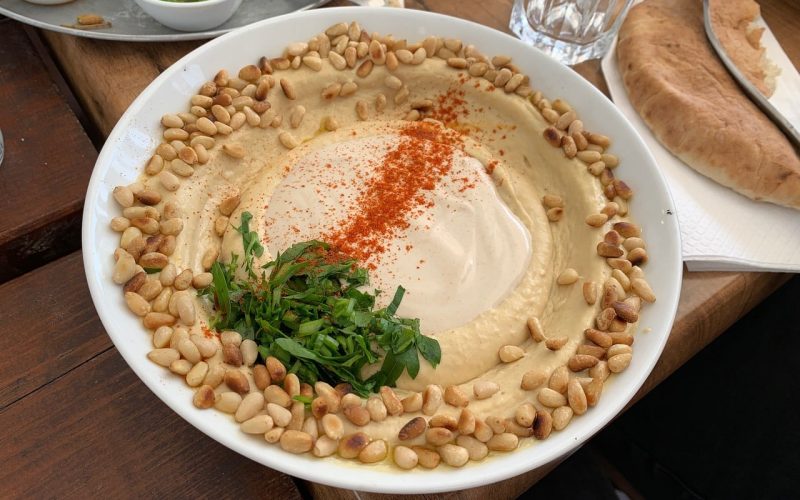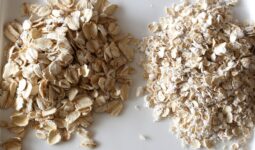Are you looking for an alternative to tahini in your recipes? Tahini, made from ground sesame seeds, is often used in Mediterranean dishes.
But if you don’t have it on hand or are looking for something different, there are several delicious and nutritious substitutes for tahini.
Tahini is a thick paste of hulled sesame seeds – usually raw – processed into a buttery consistency.
It can be bought off the shelf as a spread or used to add flavor and texture to savory dishes such as hummus.
The nutty flavor profile of tahini also makes it popular in desserts such as baklava and halva.
Tahini has progressively gained popularity in kitchens worldwide over the past ten years, known for its deep, earthy flavor and glossy, creamy texture.
However, it has a long history of use in Middle Eastern cuisines where it originated. It is the main component in popular recipes, including hummus, halva, and baba ganoush.
Today, however, various foods, including cookies and ice cream, hearty soups, pasta sauces, and more, contain sesame paste.
But what if you’re eager to try one of those recipes but discover that you’re out of tahini?
Whether you’ve run out of tahini or are just looking to try something new, many substitutes for tahini can enhance the flavors of your favorite dishes.
Here we will look at some tasty options that closely replicate its delicious taste while delivering important nutritional benefits.
1. Cashew And Almond Butter
Cashew and almond butter are both good substitutes for tahini in many recipes.
Cashew butter is rich and creamy, making it well-suited for sauces and dressings. It also has a mild flavor that can easily be added to any recipe for tahini.
Almond butter, on the other hand, can have a slightly nuttier taste than cashew butter, depending on how it’s processed.
Both nut butter make great alternatives to tahini in terms of texture and flavor, allowing you to still enjoy the same dishes with an interesting twist.
These options are healthier than tahini since they usually don’t contain added oils or sugars. Still, they also last longer — unlike tahini, which needs to be used fairly quickly after opening.
2. Sunflower Deed Butter
Sunflower seed butter is one of the tasty and versatile substitutes for tahini, which is made from ground sesame seeds.
Sunflower seed butter has a similar consistency to tahini and can be used in many of the same ways.
It has a slightly sweeter nutty taste but also contains some health benefits of sesame, including calcium for stronger bones and magnesium for improved muscle function.
One of sunflower seed butter’s greatest qualities is its versatility; it can be used as an ingredient in smoothies, stir-fries, salad dressings or spread on toast.
It makes an excellent addition to dips and sauces such as hummus, baba ghanoush, and zhoug, giving them extra flavor without overpowering their taste.
Refined sunflower oil used as the base ingredient for sunflower seed butter also has a range of nutrition benefits due to its high amounts of Vitamin E, which helps keep your skin healthy and smooth.
Also, sunflower oil is rich in monounsaturated fats, making it a heart-healthy food choice while still having the same creamy texture on your tongue that you would expect from tahini.
Sunflower seed butter is also free from major allergens such as gluten, peanuts, and dairy, thanks to the absence of peanuts or tree nuts in their natural form.
This makes it a safe option for those with allergies or dietary restrictions who miss out on enjoying dishes because traditional tahini ingredients aren’t suitable.
Overall, no matter which recipe you choose to use it in, sunflower seed butter, one of the substitutes for tahini, provides delicious flavor and plenty of nutrition for any meal or snack.
3. Sesame Oil
Sesame oil is one of the increasingly popular substitutes for tahini in Middle Eastern recipes.
Tahini, made of ground sesame seeds, has been a popular ingredient in hummus, baba ghanoush, and other Middle Eastern dishes for centuries.
However, it can be difficult to find and expensive. On the other hand, Sesame oil is easy to find and cost-effective.
When using sesame oil as a tahini substitute, you will get a similar taste with a slightly different texture and consistency. The dish’s flavor may not be exact, but it is still very tasty.
Sesame oil has many health benefits, including high levels of vitamins A and E and minerals such as zinc, calcium, and magnesium.
Also, it contains healthy fats that can help lower cholesterol levels and reduce inflammation throughout the body.
Additionally, sesame oil has antibacterial properties making it ideal for use against infections such as salmonella or e coli bacteria in raw meats or salads containing uncooked vegetables.
All in all, substituting sesame oil for tahini is an economic decision and potentially a healthier one too!
4. Sesame Seeds
Sesame seeds are great substitutes for tahini in recipes. They can be used as is or toasted to bring out their nutty flavor.
Sesame seed paste is especially popular in Middle Eastern dishes, including hummus and baba ghanoush, making them an ideal alternative for those who don’t want to use tahini.
Also, sesame seeds contain essential micronutrients such as protein, fiber, B vitamins, iron, magnesium, and zinc.
These micronutrients help promote optimal health and wellness and reduce the risk of illnesses like heart disease, cancer, and diabetes.
Sesame seeds are versatile and can be added to various foods for extra flavor and nutrition.
They can be used in salads as a topping, sprinkled on oatmeal or yogurt for added crunch, incorporated into dressing or sauce recipes, or even made into a spread like tahini by grinding them into a smooth paste.
Toasting sesame seeds enhances their nutty flavor while increasing their nutritional value by unlocking more nutrients than raw sesame seeds.
For those who don’t have access to tahini but would still like to enjoy its delicious taste in various dishes, sesame seed paste is the perfect replacement!
5. Homemade Tahini
Homemade tahini can be a great substitute for the store-bought variety. Tahini is a paste made from ground sesame seeds and a traditional ingredient in Middle Eastern cooking that has become popular worldwide.
Making homemade tahini at home is easier than you’d think and allows you to customize the finished product to your tastes and preferences.
To make homemade tahini, you will need hulled sesame seeds, olive oil (or other neutral flavor oil such as grapeseed or avocado), honey or maple syrup, and a pinch of salt.
Toast the sesame seeds in a skillet over medium heat until lightly golden brown, about 3-4 minutes.
Next, transfer toasted sesame seeds to a food processor or blender and add honey/maple syrup, olive oil, and salt. Blend on high for 2-3 minutes until creamy and smooth; finally, store in an airtight container in the refrigerator for up to two weeks.
Homemade tahini is less likely to separate than store-bought varieties due to higher amounts of oil used at home.
This helps keep it creamy and less prone to splitting into solids and oils when stored. Additionally, because it is made at home, you have full control over the ingredients used.
This allows you to customize it with your preferred flavors, such as cumin, garlic powder, smoked paprika, etc., by adding them during processing if desired.
With nothing more than sesame seeds, grocery store staples like honey or maple syrup, oil, and salt, you can easily make delicious homemade tahini, one of the best substitutes for tahini, at home!
6. Pumpkin Seeds Butter
Pumpkin seed butter is delicious, nutritious, and among the healthy substitutes for tahini. It has all the same earthy, nutty flavors with slightly different sweetness.
It tastes amazing, but pumpkin seed butter contains more protein than tahini and other beneficial vitamins and minerals like zinc and magnesium.
Pumpkin seeds are rich in antioxidants which can help protect against free radical damage in the body due to their high levels of polyunsaturated fatty acids and omega-3 fatty acids.
Additionally, pumpkins seeds have been found to have anti-inflammatory properties due to their higher levels of beta-carotene compared to other nuts or seeds.
This may be useful for individuals with autoimmune diseases or chronic inflammatory disorders.
Using pumpkin seed butter can greatly expand your kitchen’s arsenal of tahini replacements in many recipes, such as hummus, baba ganoush, spread for toast, or even a healthy version of pesto sauce by simply substituting it for the traditional sesame-based spread.
Chances are that the flavor profile won’t be too distinct from the original version when using pumpkin seed butter!
It is also great for adding texture and nuttiness to salads and grain bowls due to its creamy consistency.
This versatile pantry staple on our list of substitutes for tahini can provide an easy way to make meals healthier without sacrificing flavor.
7. Peanut Butter
Peanut butter is a spreadable paste made primarily from roasted peanuts. It’s commonly used in baking and as an all-purpose condiment, like tahini.
Peanut butter can be one of the great substitutes for tahini in recipes that call for it, and it has the added benefit of providing a nutty flavor to dishes and sauces.
Although peanut butter is not identical to tahini in terms of taste or texture, it still works well as a substitution, especially when added to savory dishes such as hummus, curries, dips, and dressings.
The best thing about using peanut butter instead of tahini is that you don’t have to spend additional money buying tahini paste.
Many pantries already contain jars or containers filled with creamy or chunky peanut butter.
Peanut butter has a longer shelf life than tahini, making it an ideal backup food stock item for households worldwide!
All said and done, substituting peanut butter for tahini can deliver unique flavors that would otherwise not be included in your cooking repertoire!
8. Black Sesame Paste
Black sesame paste is a delicious, nutty-flavored alternative to traditional tahini that can add depth and complexity to all dishes.
The paste is made from hulled and ground black sesame seeds, which taste slightly different than the white variety. The flavor is earthy, slightly bitter, and buttery, with a roasted aroma.
Black sesame paste is commonly used in Asian cuisines such as Chinese, Korean, and Japanese but can also be incorporated into Western dishes.
The paste contains more oil and imparts a stronger flavor than tahini. It’s best used when you want something richer and deeper than the milder taste of traditional tahini.
Black sesame paste, as one of the substitutes for tahini, can be used in various recipes, such as dressings, sauces, dips, spreads, or marinades.
It pairs incredibly well with soy sauce and other Asian flavors or can be enjoyed as an accompaniment to fresh vegetables or on toast like peanut butter!
You could even use it instead of almond butter or peanut butter in baking recipes for cakes and cookies.
9. Greek Yogurt
Greek yogurt is growing in popularity as a substitute for traditional tahini, a paste made of ground sesame seeds.
Greek yogurt is thick, creamy, and has an acidic edge, making it a great substitute for tahini.
The tart flavor of the yogurt provides a similar flavor to that of tahini without being overwhelmingly strong like some tahinis can be.
It also adds an extra layer of creaminess that can’t be achieved with tahini alone due to its nutty texture.
Not only does it improve the texture and taste, but Greek yogurt also adds more protein and calcium than what could be provided by the same amount of tahini.
Regarding compatibility with other flavors, Greek yogurt works especially well when combined with garlic or lemon juice due to its complementary acidic components.
It can also be blended into hummus recipes to create a lighter consistency while providing fiber and additional protein if desired.
Moreover, since it doesn’t contain any sugar or preservatives like many commercialized brands of tahini do.
Greek yogurt can provide an all-natural alternative at a lower cost than purchasing brand-name products alone.
For those looking to achieve vibrant colors in dishes such as pesto sauce or falafel, simply blending equal parts of spinach and greek yogurt will create brilliantly green hues.
All these benefits prove that although it’s not quite synonymous with traditional tahini pastes in feel or taste—Greek yogurt is one of the amazing substitutes for tahini that certainly meets its nutritional requirements while being far easier on the palate!
Conclusion
In conclusion, many great substitutes for tahini can be used in various dishes.
These include nut butter like peanut and almond butter, other seed butter such as sunflower seed butter, hummus or chickpea puree, and even yogurt.
Each has its unique flavor profile and can be used to add depth and richness to whatever dish it is added to.
They can also provide the same nutritional benefits as traditional tahini making them an excellent substitute for anyone looking for something slightly different than usual.








